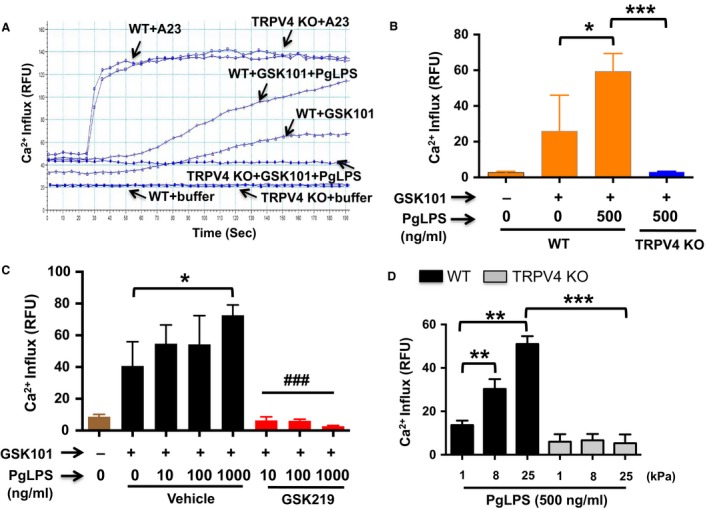Figure 3.

PgLPS‐triggered TRPV4‐elicited Ca2+ influx is increased in a matrix stiffness‐dependent manner. (A–B) FlexStation 3 recordings of Calcium 6 dye‐loaded BMDMs shows effect of TRPV4 agonist, GSK101 (10 nmol/L), on Ca2+ influx in WT and TRPV4−/− cells grown with or without PgLPS for 24 h. *P < 0.05 for WT cells versus WT plus PgLPS; ***P < 0.001 for TRPV4−/− with PgLPS versus WT with PgLPS. A23187 (or A23), a calcium ionophore, was used as a positive control. (C) Inhibition of PgLPS‐induced TRPV4‐elicited Ca2+ influx by GSK219. *P < 0.05 for WT cells versus WT plus PgLPS; ### P < 0.001 for WT with PgLPS versus WT with PgLPS plus GSK219. (D) WT and TRPV4 KO MRMs were seeded (10,000 cells per well) on collagen‐coated (10 μg/mL) polyacrylamide gels of various stiffness (1, 8, and 25 kPa). GSK101‐induced (10 nmol/L) Ca2+ influx was recorded as in Figure 3A. **P < 0.01 for cells grown on stiff (8 kPa and 25 kPa) hydrogels vs. soft (1 kPa), ***P < 0.001 for TRPV4 KO vs. WT cells grown on 25 kPa hydrogels. All experiments were repeated three times in quadruplicate.
